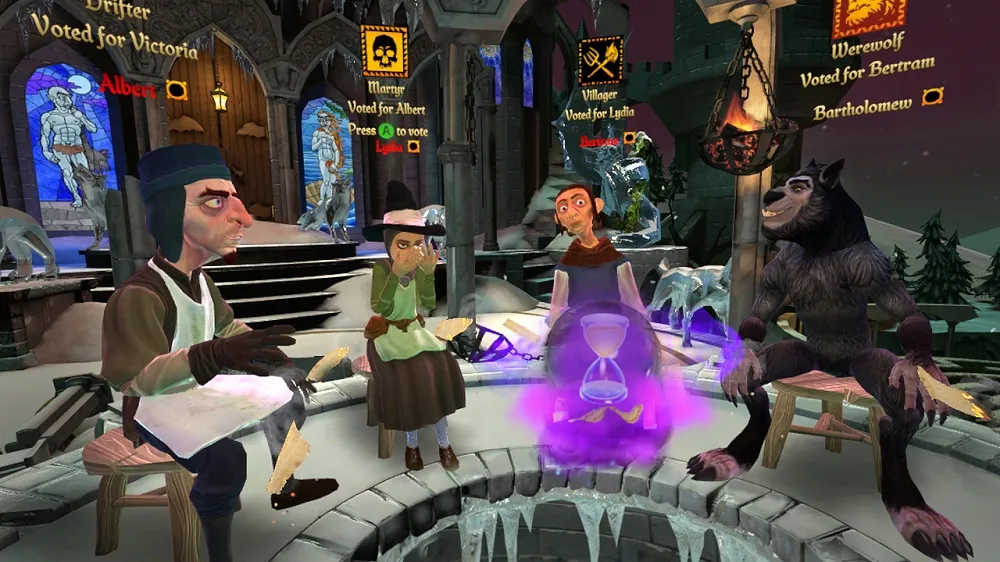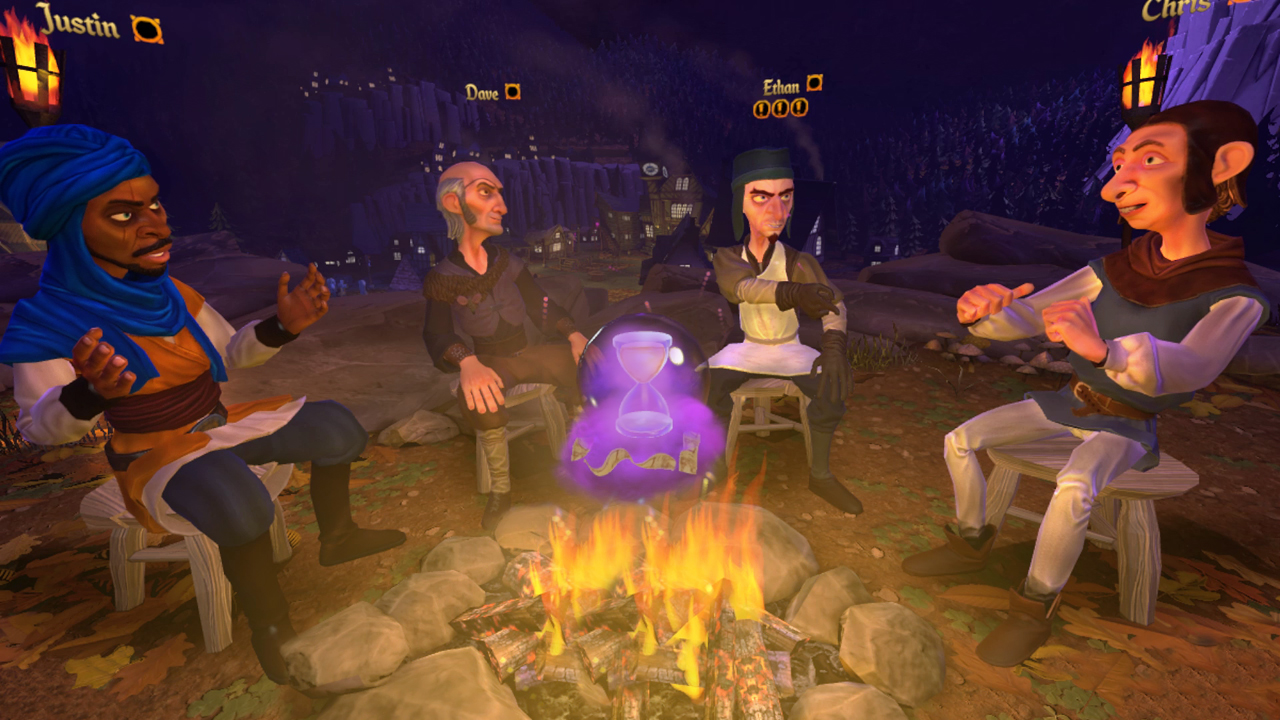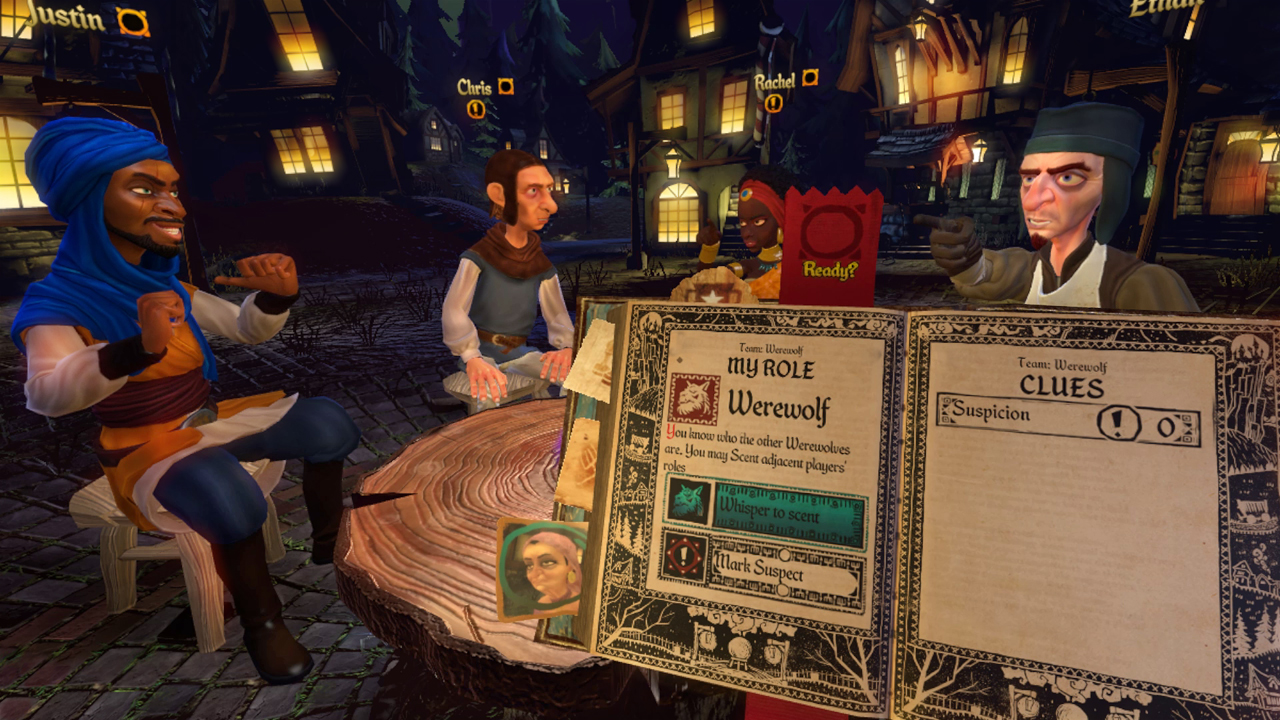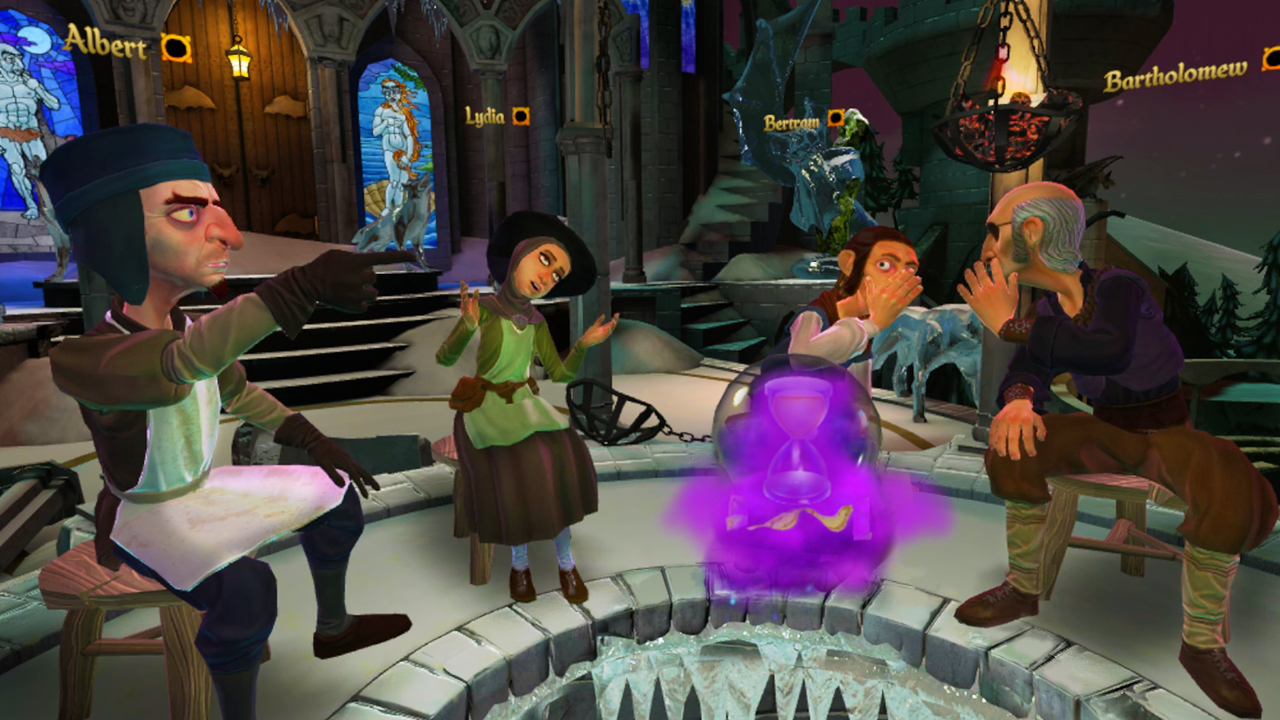In the fall of 2015, I played an exhilarating round of the classic subterfuge game, “Avalon,” with friends and fellow gamers. The concept of lying right to the face of people I shared a home with in order to win wasn’t just fun, it tapped into that primal urge to screw over my closest neighbors for one vain moment of glory. I wanted more, and I ended up buying my own copy later that week.
If you’d told me that same experience would eventually wind up as one of Ubisoft’s major VR titles, well, playing too much Avalon would probably make me think you were lying, too. But it’s real, it stars a medieval town full of colorful characters, and at least one of them is an evil werewolf out to get you all.
Werewolves Within, developed by Ubisoft’s Red Storm team, takes the classic formula of spy tabletop games like Mafia or Avalon and pits a group of five to eight players against one another to determine which among them is the titular werewolf, with nothing but social cues and minor hints to steer the conversation. Each player is assigned a team (villager or werewolf) and a role that doles out special abilities, including the watcher, tracker, turncloak, deviant, werewolf, and a host of others. The Tracker can lean left or right and listen closely for the werewolf’s breathing, while the Watcher receives clues to the identity of one person they must stare extensively at.
The werewolf, turncloak, and deviant may work in tandem, though only the turncloak will know the werewolf’s real identity. The deviant just wants to get killed, so acting as suspicious as possible is the best course of action. If a majority of players vote for the right player as the culprit, they’re struck by a magical force that reveals their true nature. If players guess wrong, an innocent villager gets the axe and the werewolves get off scot free.
Playing three rounds with fellow reporters and Ubisoft developers, what becomes immediately apparent is the natural sense of conversation Red Storm has achieved in a virtually simulated setting. Despite the fact that we we’re miles away from the developers, casual chitchat and raucous accusations flew as naturally as a Thanksgiving family dinner, including controller options that allow players to point accusingly or throw their hands up in frustration. Character animations are triggered by varying levels of voice input, meaning a small “oh” might warrant a brief flick of the wrists, while a rambling diatribe will see a character angrily waving his arms around.
So it’s the middle of the night, our band of terrified townsfolk are gathered around a gypsy caravan’s fire, and at least one of us is out for blood. Lucky enough to land the role of deviant, I quickly assert myself as a questionable character. Aggressive and defensive all at the same time. Leaning over to a developer’s character allows me to whisper in their ear (blocking the audio for all other players), but the rest are far too quick-witted, and I’m easily outed as a suicidal maniac.
Our second round, set atop an ancient stronghold, seemingly out of Skyrim, is even more contentious as a developer finds himself on the receiving end of heaps of criticism. My role as tracker only clues me into three potential suspects on the opposite side of the circle, but no amount of arguing can convince my fellow villagers that they’ve got the wrong man. As it turns out, a second werewolf sat among us, and our honest villager’s soul was blown from his innocent body, much to that player’s righteous snark. Our third round proves the most interesting, as our quietest player is deemed the werewolf, and I, the werewolf-allied turncloak, seated right next to him. My attempts to draw aggression away from the werewolf work momentarily, causing confusion in the group, but they ultimately see through my wickedness and strike down the beast.
Werewolves Within may not revolutionize the party game, but it does reinvent our options for playing it with friends who might not otherwise be there.
“For me, I think the focus is on getting players to play together, getting some sense of relatedness,” lead designer Justin Achilli said. “One of our players was talking about how she looked forward to playing with her friends from Australia, and that’s a big win for us. If you don’t have everyone ready for game night locally, you can play around the world.”
Preferential matching plays a huge role in creating fun matches, Achilli added. If two friends are on at the game at the same time, the game will automatically match them up, though the game’s multiplayer-only direction means you’ll likely be playing with new players quite often.
Werewolves Within is scheduled for a fall 2016 release targeting all major headsets. There’s currently no confirmation on which platforms it will release on, but our demo was run on the Oculus Rift.
—
Joseph Knoop is a freelance writer with work published at Game Informer, PC Gamer, Playboy, and other outlets. You can follow him on Twitter: @JosephKnoop.





























